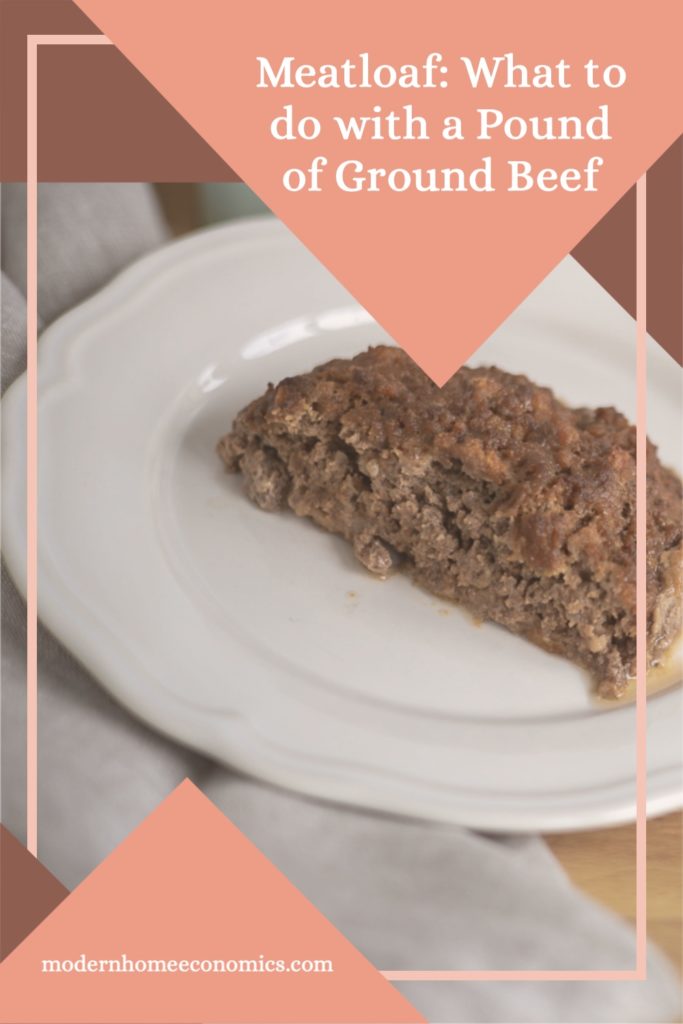Meatloaf: the uniquely American dish with competing histories (medieval Europe? German immigrants?). It’s also one of the answers to ‘I have a pound of ground beef, what can I do with it?’
In A Meatloaf in Every Oven, Frank Bruni and Jennifer Steinhauer say that meatloaf “in its many iterations and guises was often a sort of culinary scrap heap, a refuge for leftovers, in the spirit of many casseroles and of shepherd’s pie. It was a way to stretch protein. It was a way to use up excess vegetables. It was a ragtag orchestra of ingredients on the verge of expiration.”
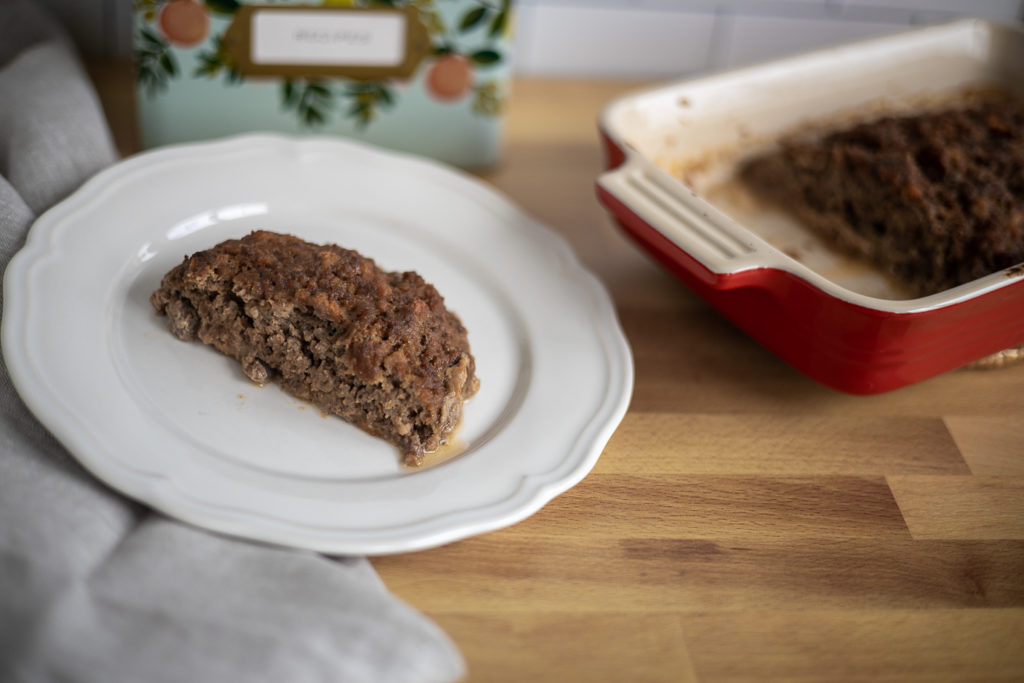
Traditions
I’d venture to say that most families that serve meatloaf have their own spin on the dish, if it’s even made the same way each time: what meat is used, what is added to stretch the protein into a more filling meal, and what spices are added. Growing up, the meatloaf my Mom made used ground beef, oatmeal, and it included onions. Adding ketchup to it and on top usually kept it from getting too dry.
Honestly, over the years I was never much of a fan of meatloaf. Most versions that I tried tended to be a little too dry or a little too spicy (usually the case in restaurants, when they try to get fancy with it). I was just getting out of college when I found Leanne Ely and SavingDinner.com. Her Menu Mailer program broadened my cooking horizons quite a bit, and she had so many delicious takes on the humble meatloaf, including one that included shredded zucchini (which I had forgotten about until just now, and that needs a repeat visit – yum!), and the one on which I based the recipe below.
A quick detour – both my husband and I enjoy cooking, but I joke that he’s the chef, and I’m the baker. He’s the type that can make something up on the fly choosing both the ingredients and the ratios as he goes, and it always tastes amazing. (His meatloaf usually includes cheddar cheese and black olives.) Me? I usually need to start with a recipe and, from there, I can omit or substitute with abandon. If I enjoy my modifications, I make a note so that I can repeat next time. (I once used tarragon vinegar in a dish because it’s what I had, and it’s now impossible to make it any other way.)
Meatloaf basics
Meatloaf has a basic format:
- ground meet of some type. This can be anything but ground beef or a beef/pork mixture is most common.
- filler to keep it from getting too dense. This could include breadcrumbs, oatmeal, crackers, Panko bread crumbs, rice, or minced vegetables
- egg and/or dairy to bind and moisten
- seasonings
- toppings are optional but could be bacon, glazed, sauced or naked
- shape into a loaf and bake. I usually freeform the shape on a baking dish, but they do make meatloaf pans as well.
How I Make Meatloaf
Honestly, you could literally just toss all the ingredients in a bowl and mix. I’m sure most people do, but I do put mine together in a specific order. There’s a method to my madness.
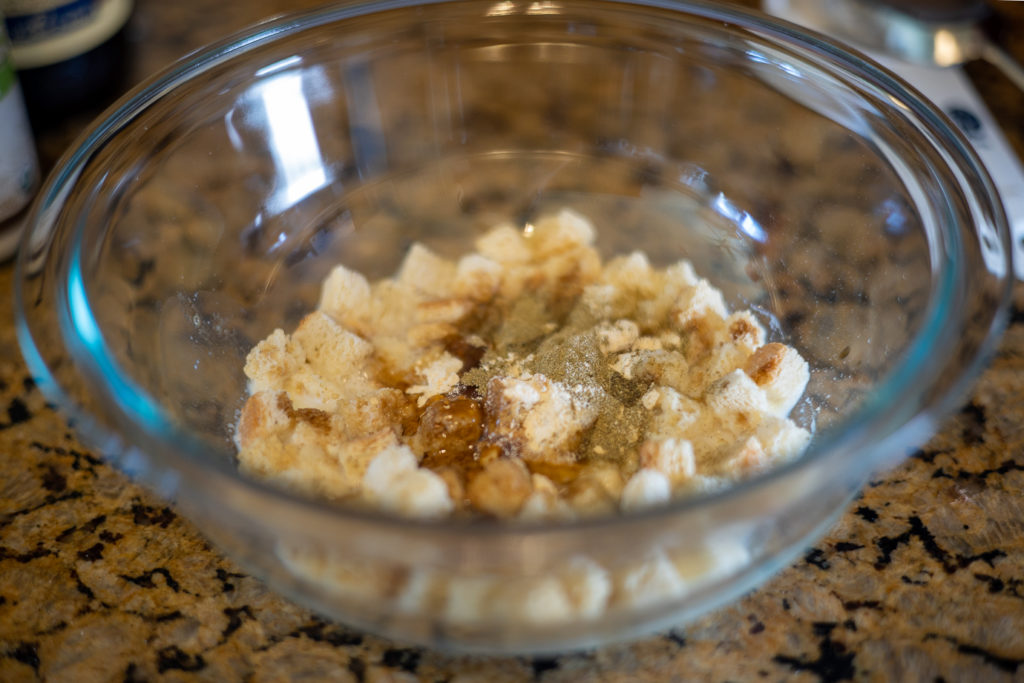
The first two ingredients I add are the stuffing mix and the buttermilk. I gave up on buying liquid buttermilk a long time ago because it was never in the amount that I needed, and I don’t use it that often.
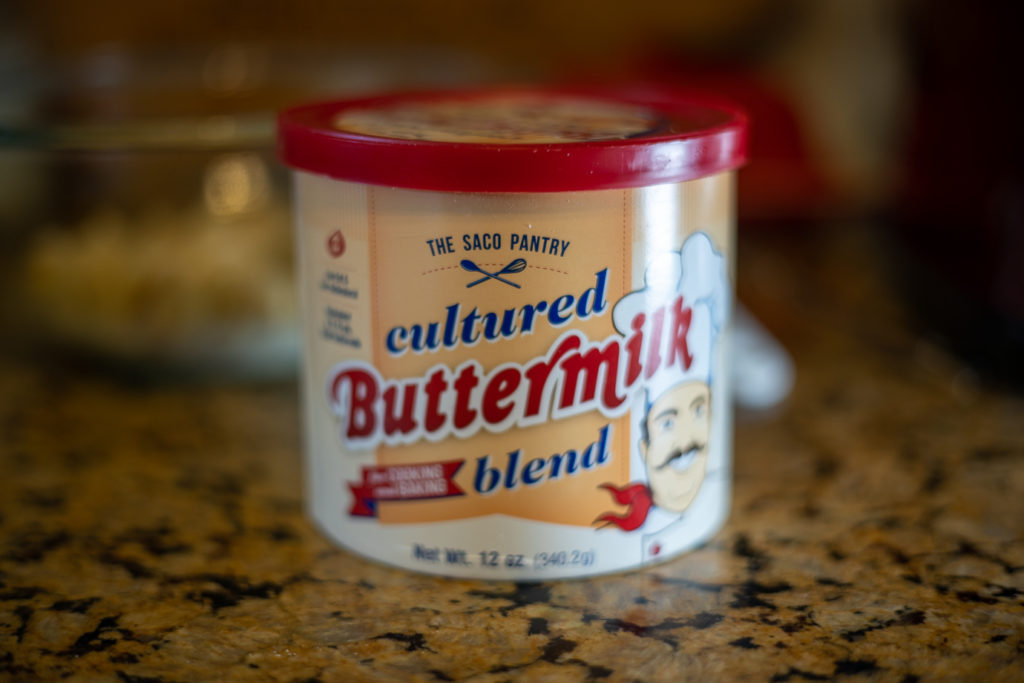
Enter the glorious invention that is powdered buttermilk. Add water, mix: buttermilk! Even better, the powdered version is good for years in the refrigerator, so I don’t have to worry about trying to find the 8-oz sized buttermilk containers in the store…if they even have it at all.
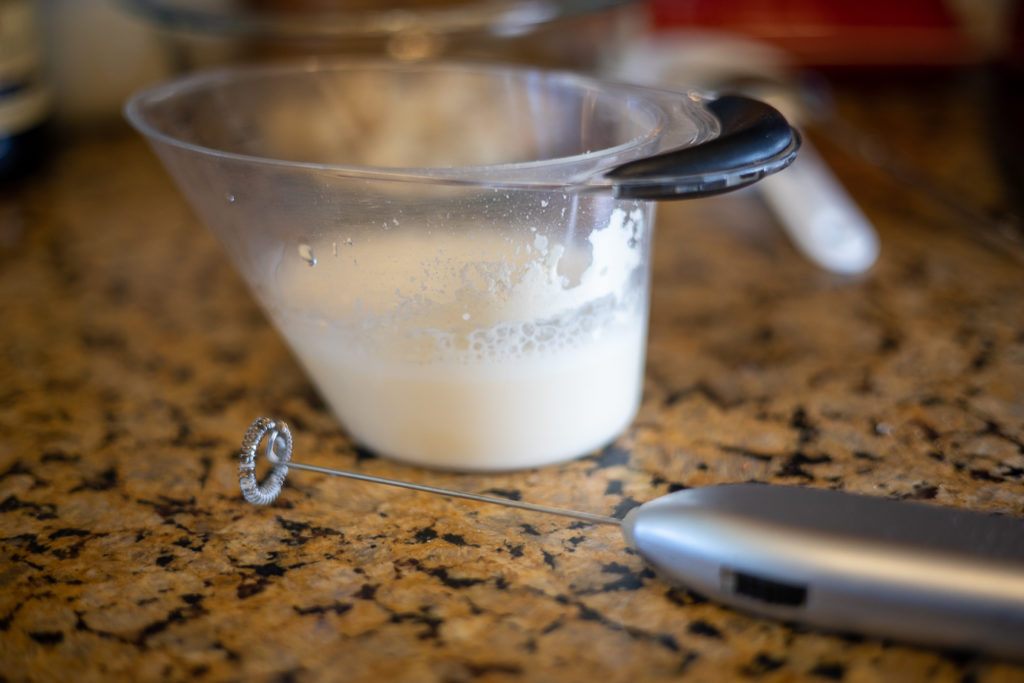
I do find it easier to use a battery-powered milk frother to mix the buttermilk because it breaks up the lumps quite a bit faster. But I digress. The reason these two go in first is because I want to give the buttermilk a chance to soak into the stuffing mix. If I was using bread crumbs, it’s a little less important because the pieces are smaller. But with the bread cubes in the stuffing mix, it’s much easier to incorporate it later if it’s softened.
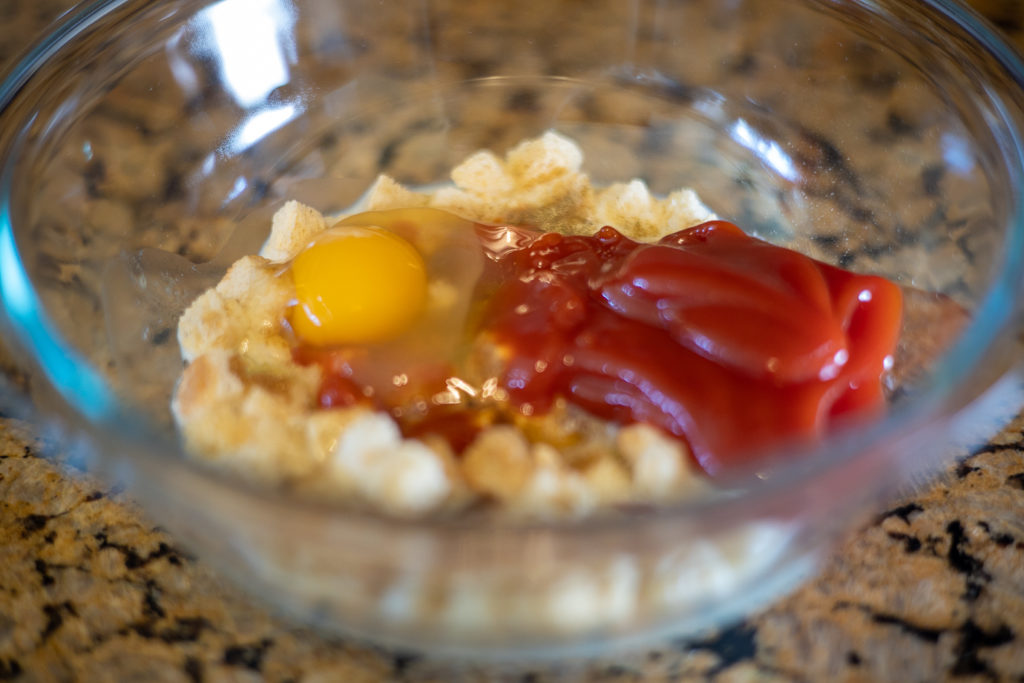
Next, I add in the other liquid ingredients and spices. I’m not mixing yet, just layering things in and letting the bread soften.
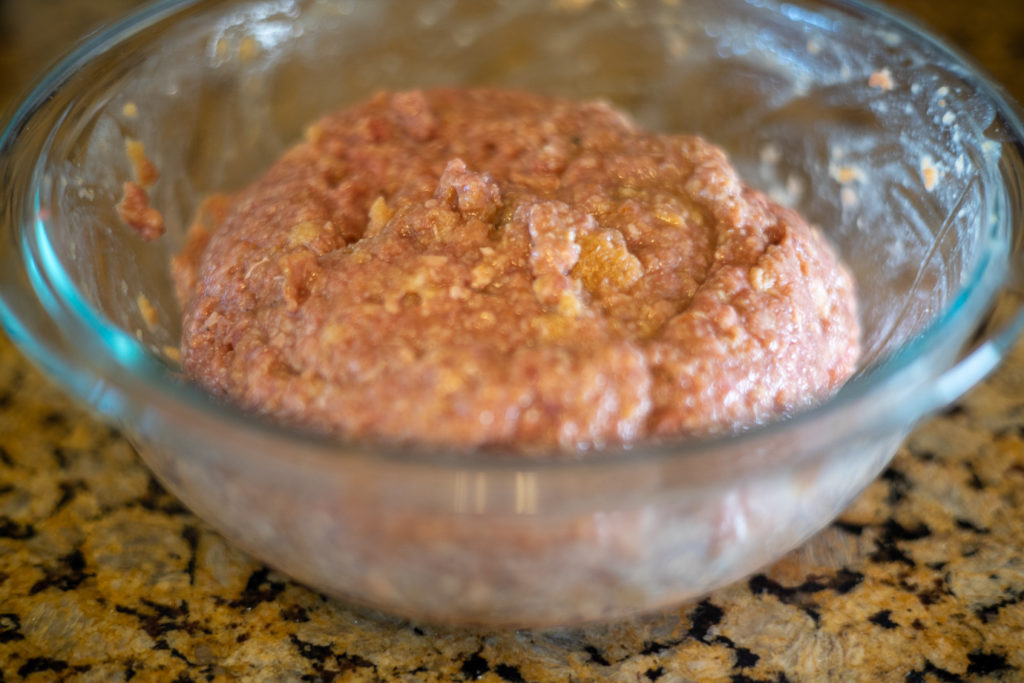
I add the meat in last on top, then mix. You can use a spoon to mix the meatloaf, but honestly, most of the time it’s a lot easier to just wash my hands, ditch my rings on the counter for a few minutes and mix it with my fingers. Some people prefer not to touch raw meat, so a spoon also will work.
Finally we get to the point where it’s ready to cook. You can also freeze it at this point – I usually use a gallon-sized freezer zipper bag and flatten it out as thin as possible so that it freezes and thaws more quickly. You can always make a double batch and freeze half for another day.
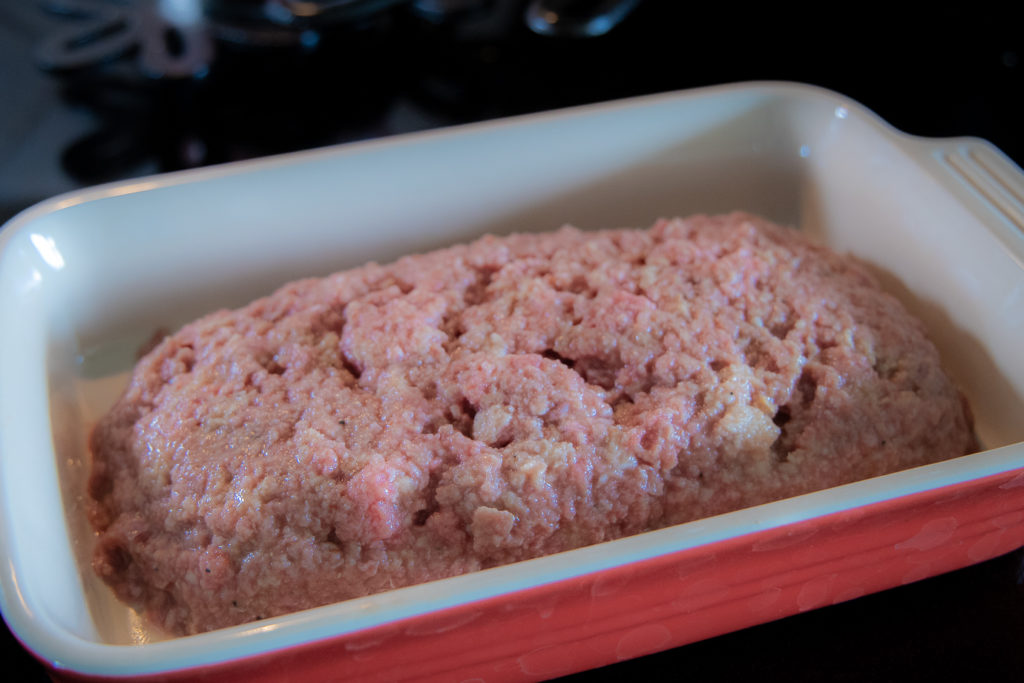
But if you’re cooking, go ahead and get your meatloaf shaped. I freehand it into an oval shape, rounded on the top. I try to keep it fairly even across the top so that I don’t end up with a thick middle section that doesn’t cook as quickly as the ends. Put it in the oven and let it cook for about an hour or until it reaches 160º F (71.1º C) in the thickest part of the loaf.

I’ve included my exact recipe below, but I’m curious.
Did you grow up eating meatloaf? What was in it?
What’s your go-to meatloaf recipe? Is it something new or your family recipe?
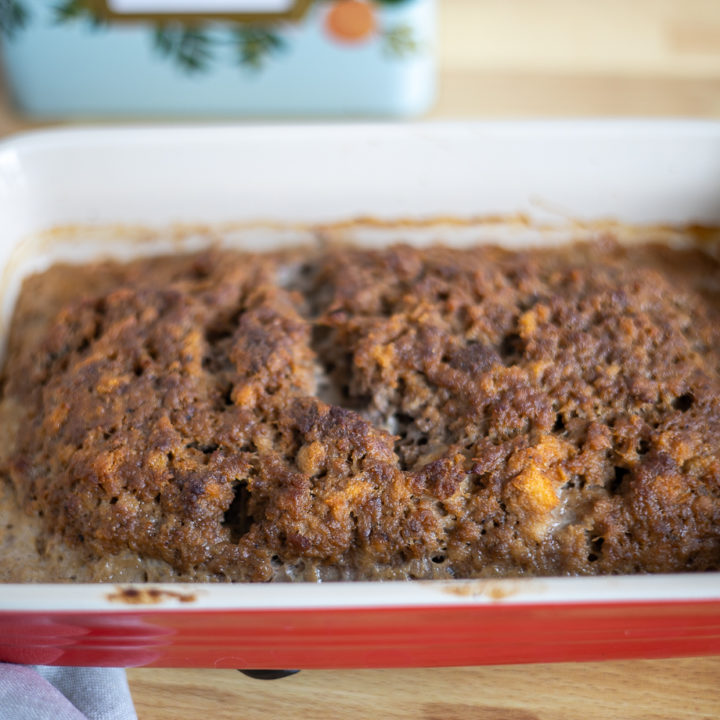
Meatloaf
Ingredients
- 2/3 cup dried stuffing mix (I use Mrs. Cubbison's Cube Stuffing Herb Seasoned)
- 2/3 cup buttermilk
- 1/3 cup ketchup
- 2 tsp Worcestershire sauce
- 2/3 tsp honey
- 1 whole egg
- 1 1/3 tsp garlic powder
- 2/3 tsp thyme
- 1 lb. extra-lean ground beef
Instructions
- Preheat oven to 375ºF.
- Mix ingredients together until well blended. To make the stuffing mix easier to integrate, start with the liquid ingredients.
- Shape into a "blimp" on a 9x13 casserole or baking dish and bake for about 1 hour or until the internal temperature has reached 160ºF.
Pin for Later
